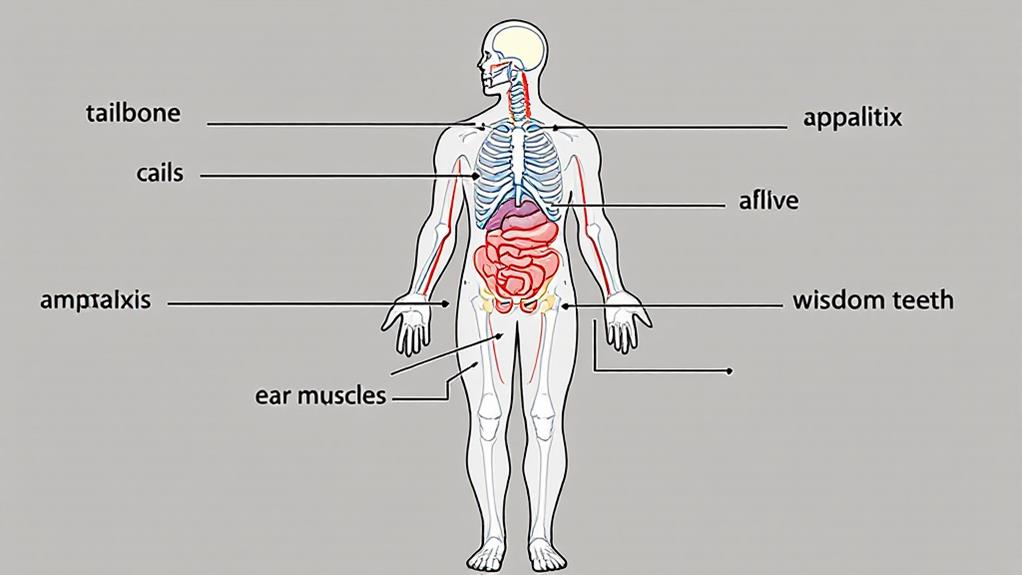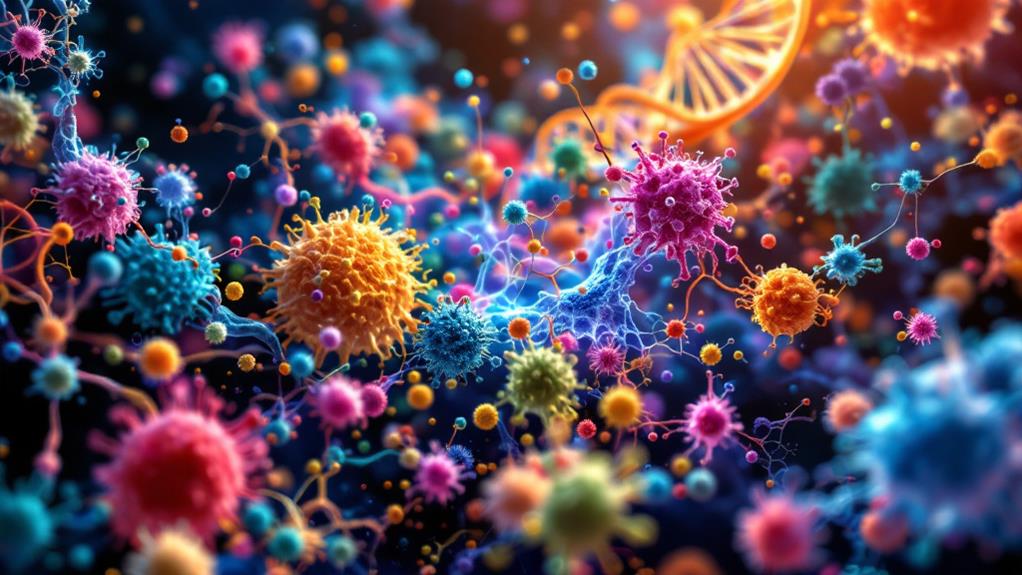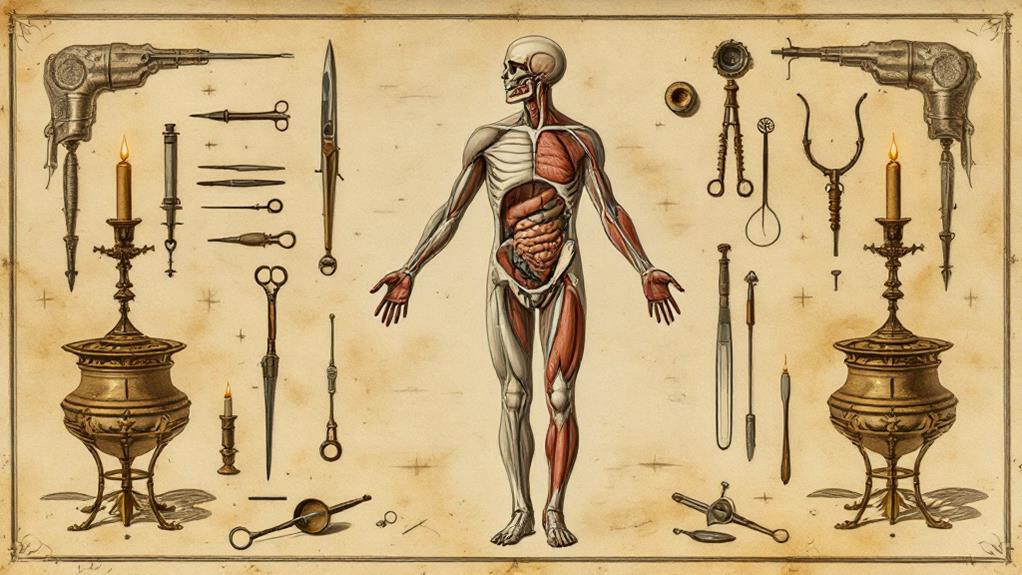Interesting Facts About the Human Skeleton: Structure and Surprising Facts
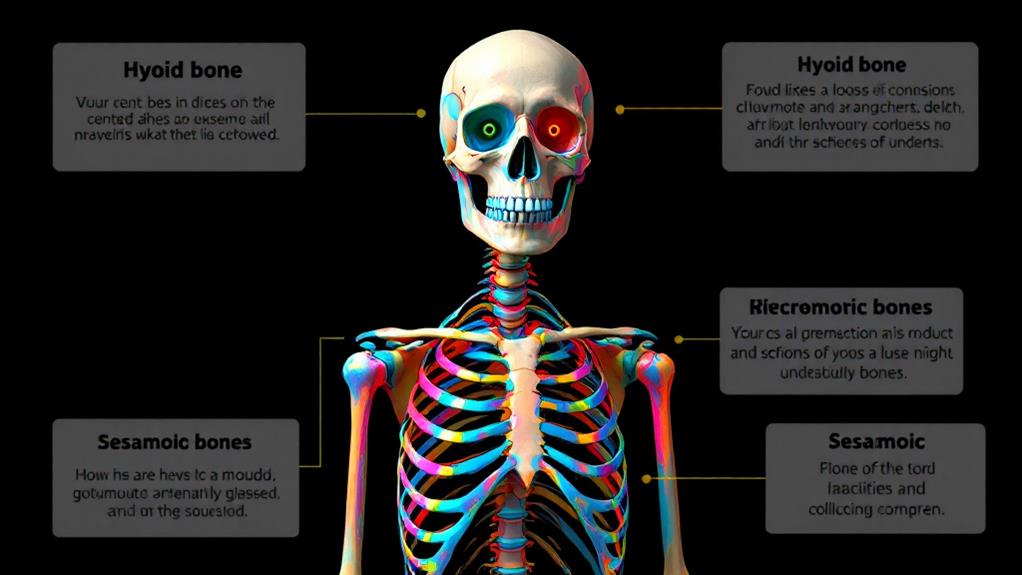
Your skeleton is more versatile than you might think. It starts with about 300 bones at birth, fusing to 206 as you grow. Your skull houses intricate sinus cavities, while your femur can support 30 times your body weight. Bones constantly regenerate, replacing themselves every decade. They're not just for structure; they store minerals, protect organs, and produce blood cells. The tiniest bones in your body, found in your ear, are indispensable for hearing. From ball-and-socket joints to hinge joints, your skeleton allows for a wide range of movements. There's much more to explore about this intriguing framework that supports you every day.
Bone Count Changes With Age
Did you know your bone count isn't constant throughout your life? At birth, you have about 300 bones, but as an adult, you'll only have 206. This reduction occurs due to bone fusion, a process where separate bones join together as you grow.
During childhood and adolescence, certain bones fuse to create larger, stronger structures. For example, your skull starts as several distinct bones that gradually unite. Similarly, your spine's vertebrae and your pelvis undergo fusion to form more essential, robust skeletal components.
While bone count decreases, bone density typically increases until your late 20s or early 30s. After this peak, bone density slowly declines, which can lead to conditions like osteoporosis if not properly managed.
Your lifestyle choices can impact your bone health. Regular exercise, especially weight-bearing activities, helps maintain bone density. A diet rich in calcium and vitamin D also supports bone strength. As you age, it's indispensable to prioritize bone health to reduce the risk of fractures and maintain mobility.
Skull's Hidden Chambers
Beneath its solid exterior, your skull harbors a network of intricate chambers and passageways. These hidden spaces, known as sinus cavities, play indispensable roles in your body's function and health. While they may seem like empty voids, these chambers contribute to your skull's structure and serve multiple purposes.
Your skull's sinus cavities are lined with mucous membranes that help filter the air you breathe, trapping harmful particles and moistening the air before it reaches your lungs. They also affect the resonance of your voice, giving it its unique timbre. Surprisingly, these chambers can impact your bone density, as they help redistribute weight and pressure throughout your skull.
The presence of these hidden chambers evokes various emotions:
- Awe at the complexity of human anatomy
- Curiosity about the unseen structures within our bodies
- Appreciation for the intricate design of our skeletal system
- Wonder at how these spaces influence our daily lives
Understanding your skull's hidden chambers can help you better appreciate the marvel of human anatomy and the significance of maintaining good sinus health. Regular check-ups and proper care can guarantee these essential spaces continue to function ideally throughout your life.
Strongest Bone in the Body
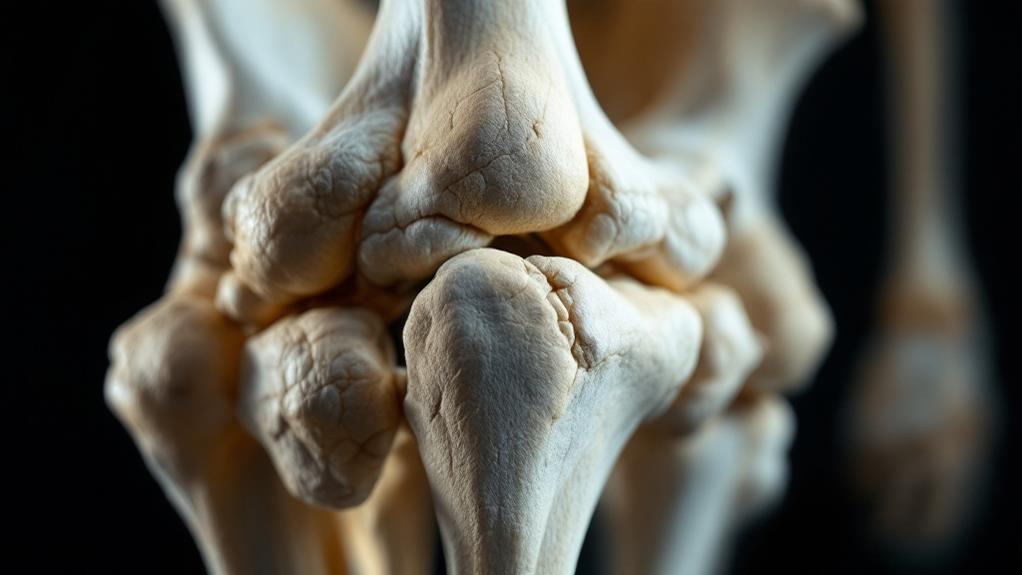
While the skull's hidden chambers are fascinating, another intriguing aspect of the human skeleton is its strongest bone. You might be surprised to learn that the femur, or thighbone, holds this title. It's not only the longest bone in your body but also the sturdy.
The femur's strength comes from its unique structure and composition. It's a dense, compact bone with a thick outer layer of cortical bone surrounding a spongy interior. This design gives it exceptional bone density and fracture resistance. In fact, it can support up to 30 times the weight of an average adult.
You'll find the femur connecting your hip to your knee, bearing most of your body weight when you stand, walk, or run. Its strength is necessary for these everyday activities. Interestingly, the femur is so strong that it's often compared to steel in terms of its ability to withstand pressure.
Despite its strength, the femur isn't indestructible. High-impact injuries or certain medical conditions can still lead to fractures. However, its resilient nature makes it one of the least commonly broken bones in the human body.
Regenerative Power of Bones
Your bones are living tissues with astounding regenerative abilities. They're constantly undergoing a process called bone remodeling, where old bone tissue is removed and replaced with new tissue. This process helps maintain bone strength and repair minor damages that occur daily.
When you break a bone, its remarkable healing powers kick into action. The bone healing process involves several stages, including:
- Formation of a blood clot at the fracture site
- Development of new blood vessels to supply nutrients
- Creation of a soft callus to bridge the break
- Hardening of the callus into new bone tissue
You'll be amazed to learn that your skeleton replaces itself entirely every 10 years. This continuous regeneration guarantees your bones remain strong and healthy throughout your life. However, it is pivotal to support this natural process by maintaining a healthy lifestyle, including proper nutrition and regular exercise.
While bones have impressive regenerative powers, severe injuries or certain medical conditions can impair this ability. That's why safeguarding your skeletal system and seeking immediate medical attention for any bone-related issues is paramount.
Skeletal System's Vital Functions
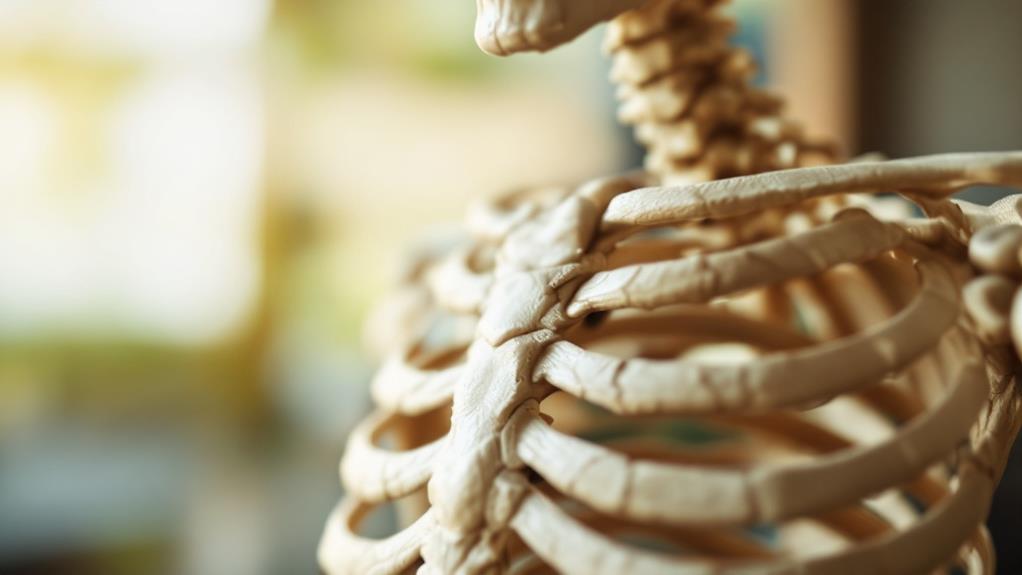
The skeletal system does far more than just provide a structure for your body. It's a complex and vibrant system that plays indispensable roles in your overall health and well-being. Your bones serve as a storage facility for essential minerals like calcium and phosphorus, releasing them into your bloodstream when needed. This nutrient transport function helps maintain proper mineral balance throughout your body.
Your skeleton also offers essential protection for your internal organs. The skull safeguards your brain, while your ribcage shields your heart and lungs. The vertebrae of your spine protect your spinal cord, ensuring the integrity of your central nervous system. Additionally, your bones work as attachment points for muscles, enabling movement and providing structural support.
You might be surprised to learn that your skeletal system is also responsible for blood cell production. The marrow within your bones produces red blood cells, white blood cells, and platelets, which are essential for oxygen transport, immune function, and blood clotting. This hematopoietic function is indispensable for maintaining your overall health and fighting off infections.
Unique Features of Spine
Four extraordinary features set the human spine apart from other skeletal structures. Your spine's unique S-shaped curve, consisting of cervical, thoracic, lumbar, and sacral spinal curvatures, allows for efficient weight distribution and shock absorption. This remarkable design enables you to maintain balance and stability while walking upright.
Intervertebral discs, the spine's natural shock absorbers, cushion your vertebrae and provide flexibility. These gel-like structures allow you to bend, twist, and move with ease. Your spine also houses and protects the spinal cord, an indispensable component of your nervous system that transmits signals between your brain and body.
The human spine's adaptability is truly awe-inspiring:
- It can support up to 500 pounds of pressure
- It allows for an impressive range of motion in multiple directions
- It contains over 120 muscles, 220 ligaments, and 100 joints
- It grows about 15 mm during sleep and shrinks the same amount during the day
Your spine's unique features contribute to its strength, flexibility, and essential role in supporting your body's structure and function. Understanding these characteristics can help you appreciate the complexity of your skeletal system and motivate you to maintain proper spine health.
Smallest Bones in Human Body
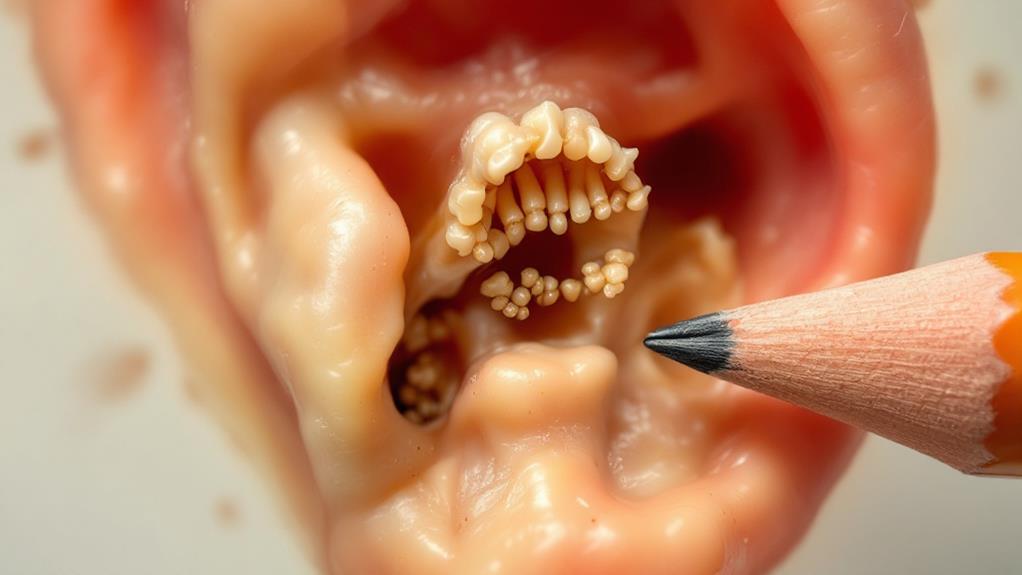
While the spine's impressive structure garners attention, it's fascinating to shift our focus to the tiniest components of our skeletal system. The smallest bones in your body are the auditory ossicles, located in your middle ear. These three minuscule bones - the malleus, incus, and stapes - work together to transmit sound vibrations from your eardrum to your inner ear.
The stapes, also known as the stirrup bone, holds the title for the smallest bone in your body. It's roughly the size of a grain of rice, measuring about 3 millimeters in length. Despite its tiny size, it plays a pivotal role in your ability to hear.
Bone size variations throughout your body are significant, with the femur (thigh bone) being the largest. Bone density fluctuations also occur, with smaller bones often having a higher density to compensate for their size. These variations in size and density allow your skeleton to efficiently support your body and perform various functions.
Understanding the smallest bones in your body highlights the intricate design of your skeletal system and its ability to accommodate diverse functions, from supporting your weight to facilitating delicate sensory processes.
Living Tissue Within Bones
Beneath the hard exterior of your bones lies a thriving world of living tissue. Your bones aren't just static structures; they're dynamic organs constantly undergoing change. This living tissue within your bones plays indispensable roles in maintaining your overall health and well-being.
Bone marrow, found in the spongy interior of your bones, is responsible for producing blood cells. It's a bustling factory, churning out millions of new cells daily to keep your blood supply fresh and healthy. Additionally, your bones act as a storage system for essential minerals, particularly calcium. They're involved in calcium regulation, releasing or absorbing this vital mineral as your body needs it.
The living tissue in your bones contributes to:
- Maintaining bone density and strength
- Supporting your immune system
- Regulating your body's pH balance
- Storing energy in the form of fat cells
As you age, the balance between bone formation and breakdown can shift, potentially leading to conditions like osteoporosis. That's why it's crucial to support your bone health through proper nutrition, exercise, and lifestyle choices. By nurturing the living tissue within your bones, you're investing in your long-term health and mobility.
Joint Types and Movements
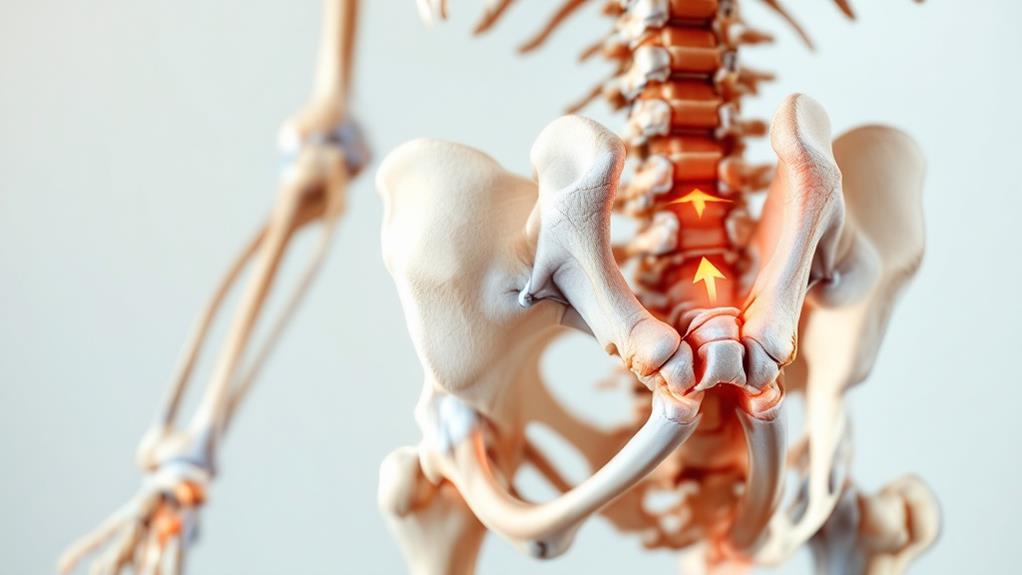
Your body boasts an impressive array of joints, each designed to facilitate specific types of movement. Among these, ball and socket joints offer the greatest range of motion. You'll find them in your shoulders and hips, allowing for rotation and multi-directional movement. These joints enable you to swing your arms and legs in wide arcs, essential for activities like throwing a ball or kicking.
In contrast, pivot joints provide rotational movement around a single axis. The most notable example is in your neck, where the atlas vertebra rotates around the axis vertebra, allowing you to turn your head from side to side. You'll also find pivot joints in your forearms, enabling you to rotate your palms up and down.
Other joint types include hinge joints (like in your elbows and knees), which allow bending and straightening motions, and gliding joints (found in your wrists and ankles) that permit sliding movements. Saddle joints, such as those in your thumbs, enable both side-to-side and back-and-forth motions. Understanding these joint types helps you appreciate the complexity and versatility of your skeletal system.
Evolution of Human Skeleton
The intricate design of your skeletal system is the result of millions of years of evolution. As humans moved to bipedal locomotion, significant changes occurred in our skeletal structure. Early hominid fossils reveal a gradual shift from a more ape-like skeleton to the modern human form you possess today.
Your spine has developed a distinct S-shaped curve, allowing for better weight distribution and shock absorption when walking upright. Your pelvis has widened and shortened, providing stability for bipedal movement and facilitating childbirth. Your skull has become more rounded, accommodating a larger brain, while your forehead has become more vertical.
These evolutionary changes have substantial implications for your daily life:
- You can walk and run efficiently on two legs
- Your hands are free for tool use and manipulation
- Your increased brain size enables complex cognitive abilities
- Your facial structure allows for a wider range of expressions
The bipedal adaptation has also led to modifications in your foot structure, with a rigid arch and non-opposable big toe for push-off during walking. Your knee joint has become larger and more stable to support your body weight. These evolutionary refinements have shaped the human skeleton into the exceptional structure you rely on every day.
